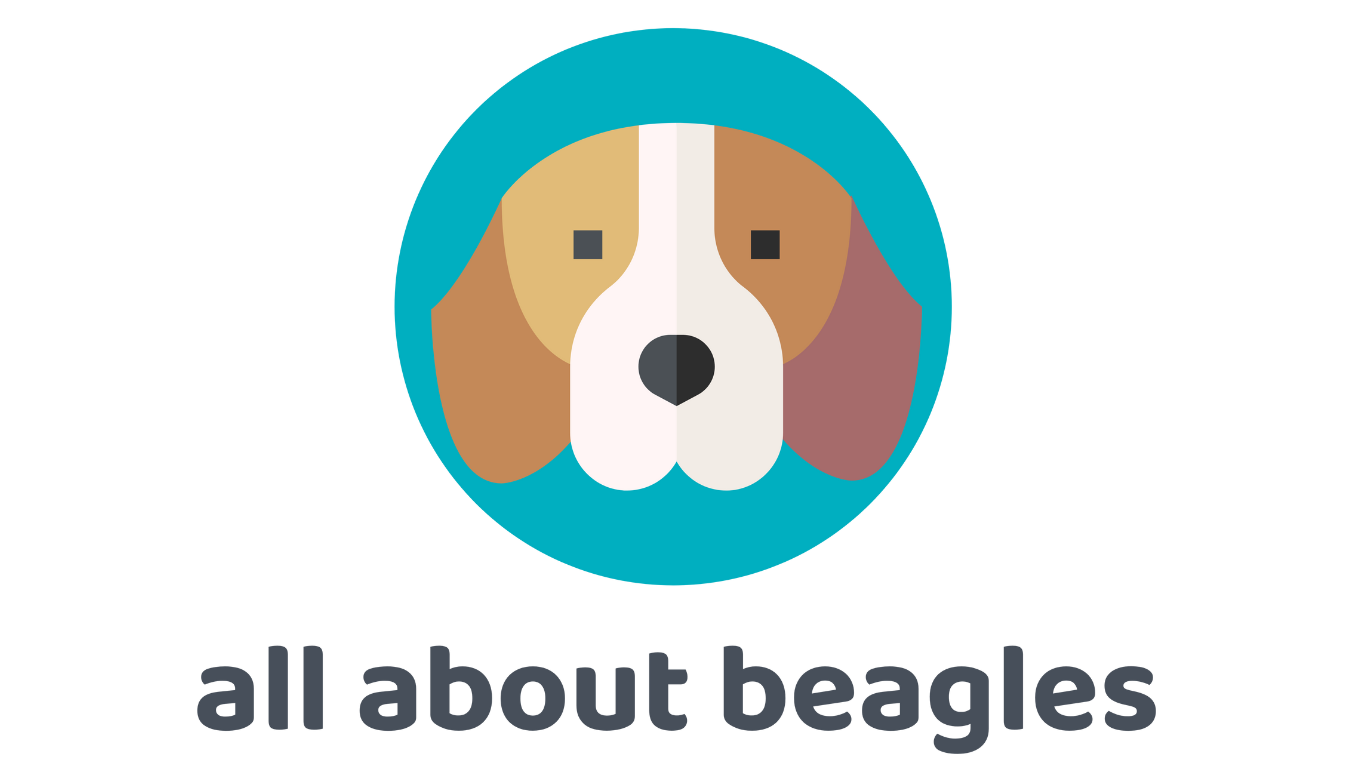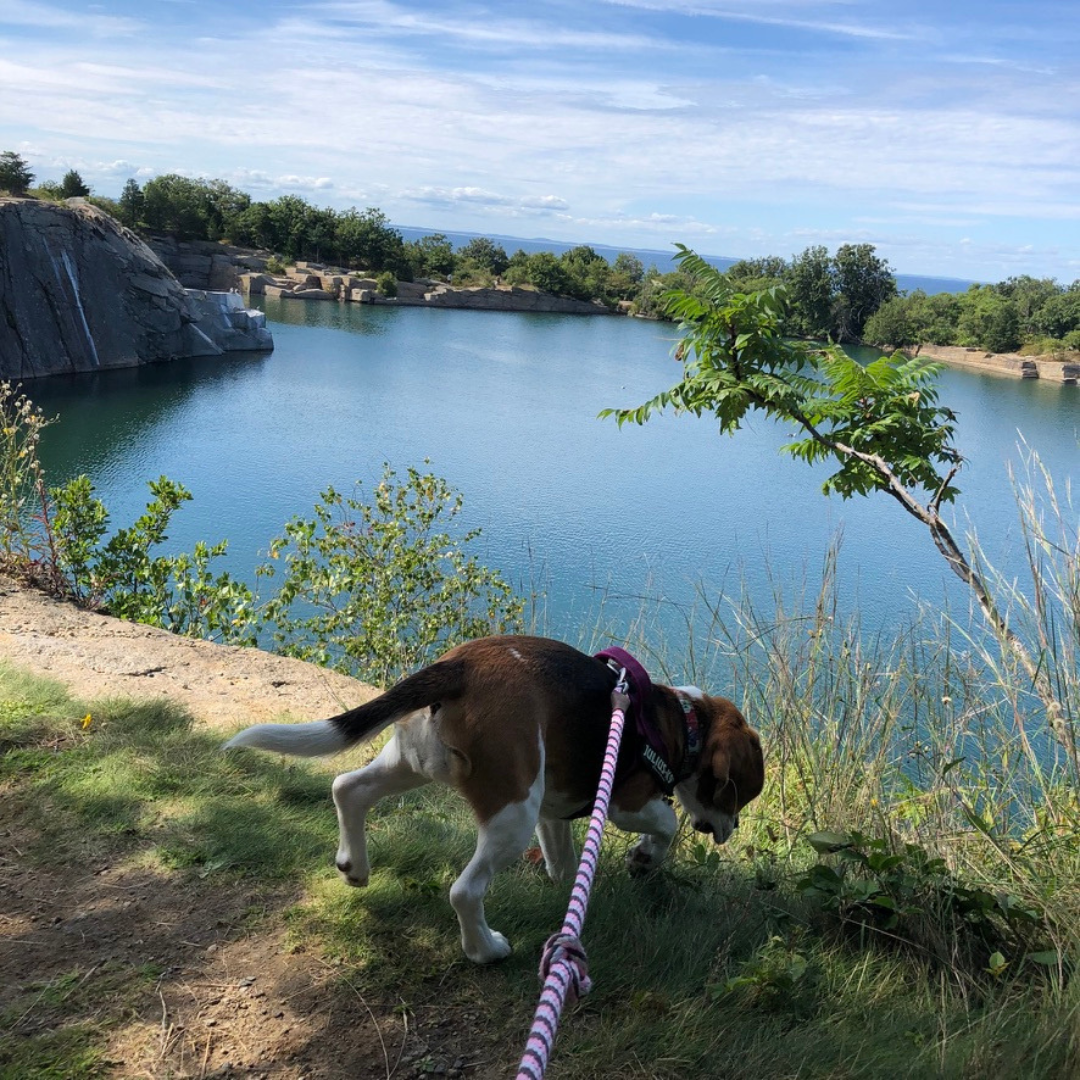How much exercise does a Beagle need? Top tips to keep your Beagle in shape!
Adventure awaits! With twice-daily walks and play, any Beagle is on the path to fitness and fun.
Beagles need a walk or some other form of exercise at least twice daily, plus plenty of mental stimulation to keep their active brains out of trouble. When it comes to exercise, Beagles certainly aren't couch potatoes - these energetic dogs love to run and play! Give your Beagle enough exercise and you'll be rewarded with a relaxed dog that is happy to chill out at home with the rest of the family.
1) How much exercise does a Beagle need?
Beagles are an active breed of dog that will enjoy plenty of daily exercise. This is not a dog that will be content with a 15-minute meander around the block! The reason for your Beagle's high energy levels can be traced back to their origins as a working dog - a hunting Beagle would cover many miles at a vigorous pace every day.
Like people, individual Beagles have personalities and tendencies of their own. Some Beagles may operate better with less exercise; some may need more. You have to get to know your own dog and provide them with the activity and stimulation they need in order to lead a happy and relaxed life.
A Beagle needs a minimum of 60 minutes of exercise per day, but you should aim for 90 minutes or more whenever possible. This should consist of a combination of walking and running, and be split into at least two exercise periods every day. So, realistically you need to commit to half an hour twice a day to keep your Beagle in shape, with some longer walks a few times a week.
As well as plenty of physical exercise, Beagles also need sufficient mental stimulation to prevent boredom and behavioral problems. If you are only exercising your Beagle for one hour per day, that leaves another 23 hours to fill. And although Beagles love a good long sleep, there are still plenty of hours in the day to get up to mischief!
If you have a secure yard or garden, your Beagle will expend plenty of mental and physical energy by exploring and playing with toys. Puzzles and treat balls are also great for keeping your Beagle entertained and out of trouble.
Trail trekking with a Beagle! Their hunting heritage makes for an energetic companion eager for exploration.
2) What happens if a Beagle doesn’t get enough exercise?
When Beagles don't get enough exercise, they can suffer from a range of different health and behavioral problems, such as obesity, diabetes, stress, and anxiety. If you are considering bringing a Beagle into your family unit, making sure you have enough time to meet their exercise needs is crucial. With Beagles, it is vital not to skimp on the daily exercise, even if your dog seems content with a quick spin around the block. You may get away with skipping the occasional walk, but a regular lack of exercise can lead to long-term health and behavioral problems.
Although Beagles are energetic and fun-loving dogs, they are prone to obesity which, in turn, can lead to reduced energy levels. This vicious circle can be hard to break, as the more weight your Beagle gains, the less they want to go out for exercise! Obesity in Beagles is linked to health problems including diabetes, high blood pressure, cancer, and arthritis.
Regular exercise is also essential to keep your Beagle's heart, lungs, bones, joints, and muscles in good condition. Steady exercise helps to build musculoskeletal strength, while short bursts of high-intensity activity boost cardiovascular health.
3) Can Beagles go on long walks?
If you're into hiking and long walks, Beagles are the perfect dog to accompany you on your outdoor adventures. These dogs have plenty of stamina and enjoy exploring the countryside, stopping to sniff every object of interest along the way. There is no better sight than following your Beagle's wagging tail along a beautiful forest track or mountain trail! But, as with all activities, it is important to keep any longer walks within your Beagle's physical capabilities.
How far you can walk your Beagle depends on their overall fitness level. Beagles are just like people - if they only normally walk for 30 minutes around the block on the leash, a 3-hour hike through mountain trails is going to push them to the limit! Taking an unfit Beagle on a long and strenuous walk will not only tire them out excessively but also run the risk of causing painful musculoskeletal injuries.
If you plan on bringing your Beagle along as your hiking buddy, it is vital to build your Beagle's fitness levels up slowly. Gradually increase the distance of your walks, making sure that your Beagle is not too tired or stiff the following day. Avoid taking older Beagles or those under 18 months of age for long hikes, as they are more susceptible to musculoskeletal injuries.
Beagle adventures on the beach! With proper training and fitness, they make great hiking companions.
4) How do you tire out a Beagle?
To tire out a Beagle, you need to provide your long-eared pal with plenty of mental stimulation as well as physical exercise. Although a walk around the block on the leash is often the most convenient way to exercise your Beagle, I'm pretty sure your dog would disagree!
Leash exercise is one of the least effective ways to tire out your Beagle - they are restricted to a steady walking pace and have little opportunity to sniff and explore. Sadly, finding opportunities to let your dog play and run safely off the leash can be limited, so often we have to make do with on-leash exercise.
To make leash exercise more stimulating for your Beagle, try incorporating some fun activities into your walks. For example, my Beagle Cocoa loves to stop and sniff everything, so sometimes I will let her take the lead and follow her nose. We have had many adventures exploring new routes when she is allowed to do this, and that makes life fun and interesting for me as well as her! These sniff walks help to keep her brain active and engaged, and she always seems more relaxed afterward as a result.
5) Can you run with a Beagle?
Some Beagles make excellent running companions and workout buddies. But that is not common for the breed.
When I first got my Beagle Cocoa, I was very into running. I hoped that I would eventually be able to run short distances, 2-3 miles with her.
I spent a long time trying to train Cocoa to walk well on the leash, first at a walk and then at a run. She loved running for the first few meters and thought it was a game, but pretty soon she would get distracted by a scent and slam on the brakes.
If you’re a runner yourself, you’ll know how frustrating it is (not to mention taxing on the old knees) to keep starting and stopping when all you want to do is get into a rhythm and grind out the miles. I was especially afraid of jerking too hard on the leash when I was running with Cocoa.
We spent many many miles, and many many hours practicing running with one another, but I realized fairly quickly that Cocoa just didn’t seem to enjoy our runs. All she wanted was the opportunity to sniff out new smells and follow her nose. While she loved the short bursts of running with me, she didn’t have the natural instinct or need to trot or canter beside me for long stretches at a time. And because it felt like we were working against one another rather than together in harmony, I wasn’t enjoying these runs either. I wasn’t getting the workout I wanted, I wasn’t building the good and trusting relationship I wanted with Cocoa, so we ditched the running together a few months after getting started.
So running long distances isn’t on the cards for me and Cocoa, and I know from Facebook groups that other Beagle owners have had similar experiences running with their Beagles too. However, I have seen people running with Beagles, and the dogs looked happy and content to run, so I know it’s possible. As with anything, there’s no one-size-fits-all answer, you have to learn your Beagle’s personality and temperament, and go with what works for them, as well as for you.
It is clear to see that by giving your Beagle plenty of exercise and mental stimulation every day, you can rest easy in the knowledge that you are doing everything you can to keep your precious pooch fit and healthy. For me, there is nothing better than taking Cocoa for a morning stroll or long hike at the weekend - after all, that's what owning a dog is all about!
If you enjoyed this article, you might also like:
🐶 Ultimate guide to exercising your Beagle
And don’t forget to come hang out with me and Cocoa on Facebook and Instagram where we share our adventures with you.
If you really loved our content and would like to hear all our latest Beagle news, join our mailing list here.
You can learn more about my Beagle Cocoa and me here.




